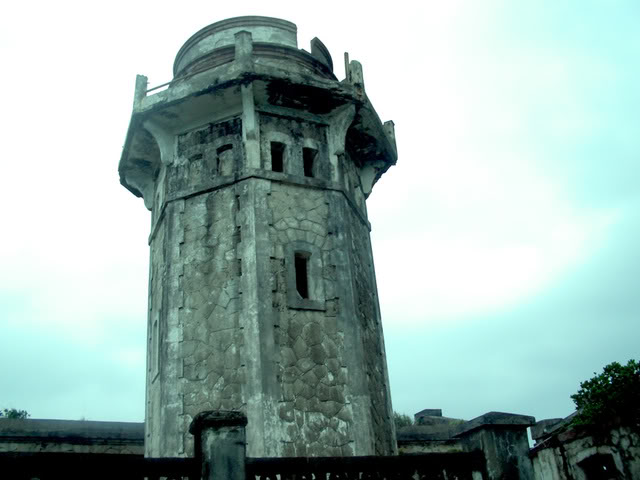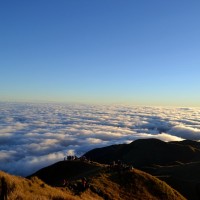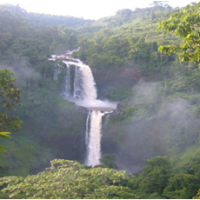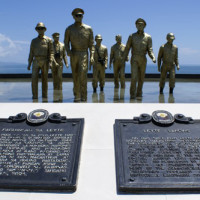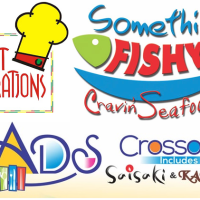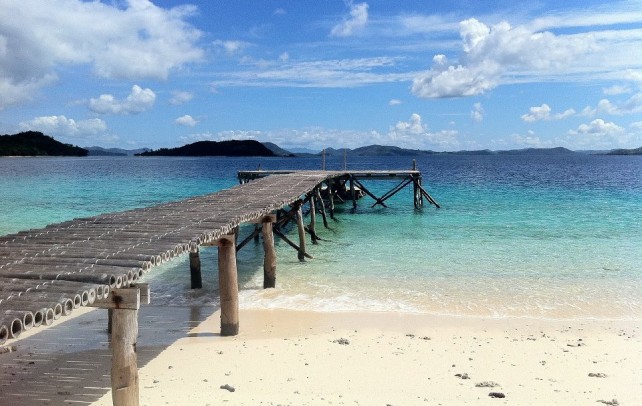
At the northeastern tip of the province of Cagayan in Luzon lies Sta. Ana – a Special Economic Zone bustling with some modern industrial establishments, casinos and other urban gaming facilities. Blessed with a beautiful coastline, this small town bears the rural and laid-back lifestyle amidst some urban features. What makes this small quiet town is the island off its shore offering long stretches of white sandy beaches and coves, a century old lighthouse, concealed waterfalls and a scenic ragged terrain embraced by howling winds and huge waves. This is Palaui Island.
Palaui Island is made up of volcanic debris, lying between the South China Sea and the Pacific Ocean. It is a protected area having been declared as National Marine Reserve in 1994, abundant in wildlife, marine life and timber. With only a small community living in the island, it is largely uninhabited. It is politically under the jurisdiction of Sta. Ana and it is home to a small fishing community. Palaui Island has no electricity, nor commercial accommodation. Its main attraction aside from the gorgeous beaches is the 18th century lighthouse built by the Spaniards called Farol de Cabo Engaño or Cape Engaño Lighthouse. From this lighthouse, the best view of Palaui Island is offered.
How to Get There
Visitors can get to Palaui Island by:
- Plane. AirPhil Express’ and Cebu Pacific’s flight to Tugeugarao from Manila. Travel time by airplane is about one hour.
- Bus. From Manila to Tuguegarao with daily trips every hour. Travel time by land is about 11 – 12 hours.
- Jeepneys. From Tabuk, jeepneys will take you to Tuguegarao.
- Bus from Ilocos and Abra to Tuguegarao.
- Bus from Manila direct to Sta. Ana.
From Tuguegarao, a bus or van ride will take you to Sta. Ana in approximately two hours. Barangay San Vicente in Sta. Ana town is the jump off point to Palaui Island. Fishing boats can be chartered for a short half-an hour ride to the island from San Vicente port.
Where to Stay
As the island is practically uninhabited, there are no commercial accommodations. Visitors can opt to stay overnight in homestead or via a tent on the beachfront. Visitors can stay at Sta. Ana, where budget and affordable resort-hotel accommodations are available.
What to Do
- Trekking to Cape Engaño and Anguib Cove. From San Vicente Port, hire a boat to Palaui Island for a 30-minute boat ride to reach the jump-off point to Cape Engaño and a half-hour hike to each the Lighthouse. You can pitch tent inside the cape but more advisable is on the beachfront. It is strongly advised to hire a guide in trekking to ensure safety and avoid getting lost in the wilderness. After trekking Cape Engaño, go to Anguib Cove / Beach where its fine white sand and rock formations will keep you marveling at the majestic sight.
- Boat tour of the Island. Exploring the island by boat is the best way to see what the island has to offer – the beautiful beach at the eastern side, the Dos Hermanas Island on the northern part, and the magnificent forest.
- Camping in the Wild. Have some adventure by camping or spending a night in the pristine jungle. One just needs to be prepared for the adventure with the right gear, necessities and guts. For safety reasons, ask a resident from Sta. Ana to keep you company as you get close to nature.
What to Bring
- First Aid Kit. This is an essential especially if you plan on trekking. This is the most forgotten essential when traveling, but one have to make sure that they got this kit packed for emergency purposes.
- Extra Food. Since Palui Island is isolated, bringing your own food to keep you energized throughout your stay is a must. You can bring in cooked food, just properly pack them or if you’re a more adventurous type of person and wants your food to be newly cooked, you could bring in some butane gas stove and camping cookware.
- Extra Water. Keeping yourself hydrated will keep you at your best condition. Water is secondary to food for survival. Although there are fresh water spring around, it is best to bring in bottled water.
- Garbage bag. Since the island is uninhabited and since it is declared by the government as a National Marine Sanctuary, bringing your trashes when leaving the island is a standard protocol. Remember, you also have the responsibility to keep the nature clean and free from pollutants.



